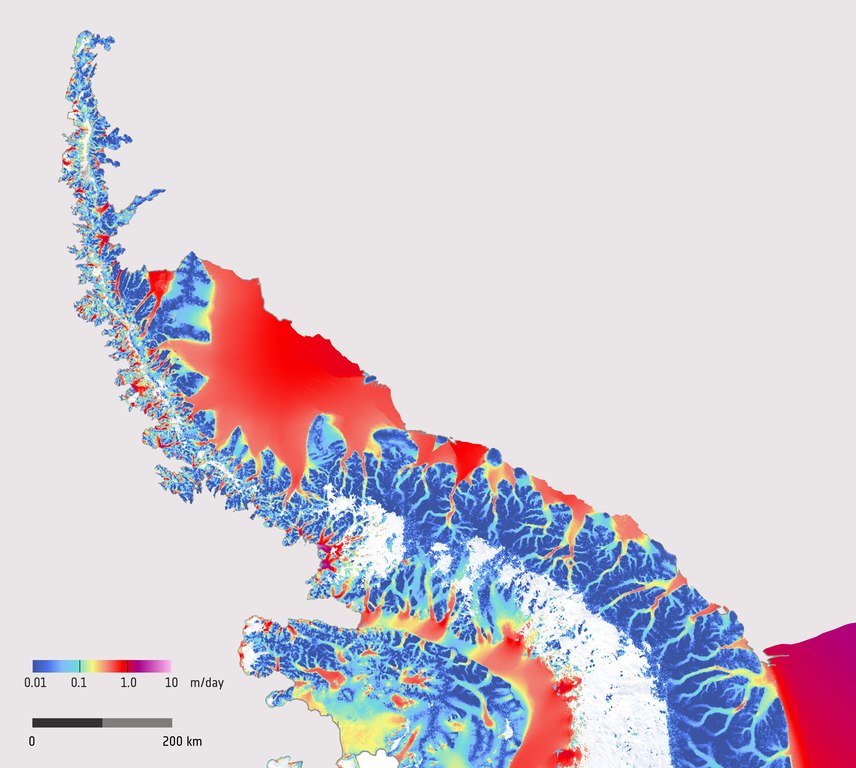Physics Research in Antarctica
Antarctica is one of the harshest environments on Earth, yet it is also an unparalleled laboratory for science. Current physics research in Antarctica explores fundamental questions in particle physics, atmospheric science, and the cryosphere. Because conditions are extreme, experiments often require innovative instruments and strong international collaboration.
Neutrino Detection and Particle Physics
Antarctica’s ice offers unique opportunities for particle astrophysics. Its clarity, stability, and vast volume allow researchers to use it as a giant detector.
IceCube Neutrino Observatory
The IceCube Neutrino Observatory, buried between 1,450 and 2,450 metres beneath the South Pole, consists of 86 vertical strings with over 5,000 light sensors. These detect faint flashes of Cherenkov radiation from charged leptons produced when neutrinos strike atoms in the ice.
IceCube has identified astrophysical neutrinos with energies far higher than those created in human accelerators. The experiment links neutrino events to cosmic sources such as active galactic nuclei and gamma-ray bursts. It also helps test models of dark matter annihilation and the behaviour of neutrinos beyond the Standard Model.
ANITA and PUEO
The Antarctic Impulsive Transient Antenna (ANITA) is carried by a balloon flying at 35 kilometres altitude. Its antennas search for radio pulses from ultra-high-energy neutrinos interacting with the ice. ANITA has observed several anomalous signals appearing to come upward through the Earth — something unexplained by current physics.
To investigate further, researchers are building the Payload for Ultrahigh Energy Observations (PUEO). This next-generation detector will fly longer missions, use improved antennas, and test whether the anomalous events are evidence of new physics or experimental artefacts.
Polar Atmosphere and Space Physics
The polar atmosphere connects Earth and space in unique ways. Therefore, Antarctica is central to geospace physics.
AGATA programme
The Antarctic Geospace and ATmosphere reseArch (AGATA) programme combines ground-based radars, magnetometers, and ionospheric sensors with satellite data. It investigates how solar wind and geomagnetic activity affect the polar ionosphere and upper atmosphere.
Key questions include:
-
How do geomagnetic storms disturb polar communications?
-
How does energy from the Sun couple into the lower atmosphere?
-
What role do polar regions play in the global climate system?
AGATA also collaborates with Arctic programmes to build a two-pole view of Sun–Earth interactions. This integrated approach improves models of space weather, which can disrupt satellites, navigation systems, and power grids worldwide.
Cryosphere and Ice Physics
The Antarctic ice sheet is central to cryosphere physics and to Earth’s climate system. Research combines satellites, field surveys, and advanced models.
Ice sheet dynamics
Projects use satellite radar interferometry and machine learning to monitor ice flow. These methods track glacier acceleration, grounding-line retreat, and ice-shelf thinning. The data feed into climate models to refine predictions of global sea-level rise.
Field campaigns drill through ice shelves to measure temperature and salinity at the base. These studies reveal how warm ocean currents erode ice from below, destabilising glaciers such as Thwaites.
Antarctic Bottom Water
Another major focus is Antarctic Bottom Water (AABW). This dense, oxygen-rich water forms on continental shelves when sea ice production leaves saltier, heavier water behind. Once it sinks, AABW spreads northward, ventilating the deep ocean and driving the global circulation.
Changes in AABW formation affect oxygen supply to deep waters and alter the storage of heat and carbon. Therefore, monitoring its production is vital for predicting climate feedbacks and sea-level rise.

Collaborative and Programmatic Research
Large-scale physics research in Antarctica depends on international coordination.
The Scientific Committee on Antarctic Research (SCAR) plays a central role. It supports collaborative programmes linking ice, ocean, and atmosphere studies. SCAR also works with national agencies to share data, standardise measurements, and reduce duplication of effort.
Projects such as IceCube, ANITA, and AGATA require long-term logistics, including aircraft, icebreakers, and polar stations. These are provided by national programmes such as the US Antarctic Program, British Antarctic Survey, and Australia’s Antarctic Division. International collaboration makes it possible to maintain year-round observations in one of the most extreme environments on Earth.
Key Takeaways
-
Physics research in Antarctica covers particle physics, atmospheric science, and ice dynamics.
-
The IceCube observatory studies high-energy neutrinos and cosmic rays.
-
The ANITA experiment and PUEO balloon missions test new models of neutrino behaviour.
-
The AGATA programme investigates space weather and solar–terrestrial coupling.
-
Research into ice sheet physics and Antarctic Bottom Water improves predictions of sea-level rise and climate change.
-
International collaboration, led by SCAR, makes these projects possible.
Together, these studies demonstrate why Antarctica is essential for addressing fundamental questions about the universe and our planet’s future.
Further Information
-
IceCube Neutrino Observatory- the world’s largest neutrino detector, based at the South Pole.
-
ANITA experiment (Wikipedia)- balloon-borne radio antenna project to detect ultra-high-energy neutrinos.
-
AGATA programme (SCAR)- international research programme on polar geospace and atmospheric physics.
-
Scientific Committee on Antarctic Research (SCAR)- umbrella body coordinating Antarctic science and collaboration worldwide.
-
ArXiv neutrino physics papers- open-access archive of technical research on IceCube and related experiments.
Back To Top
